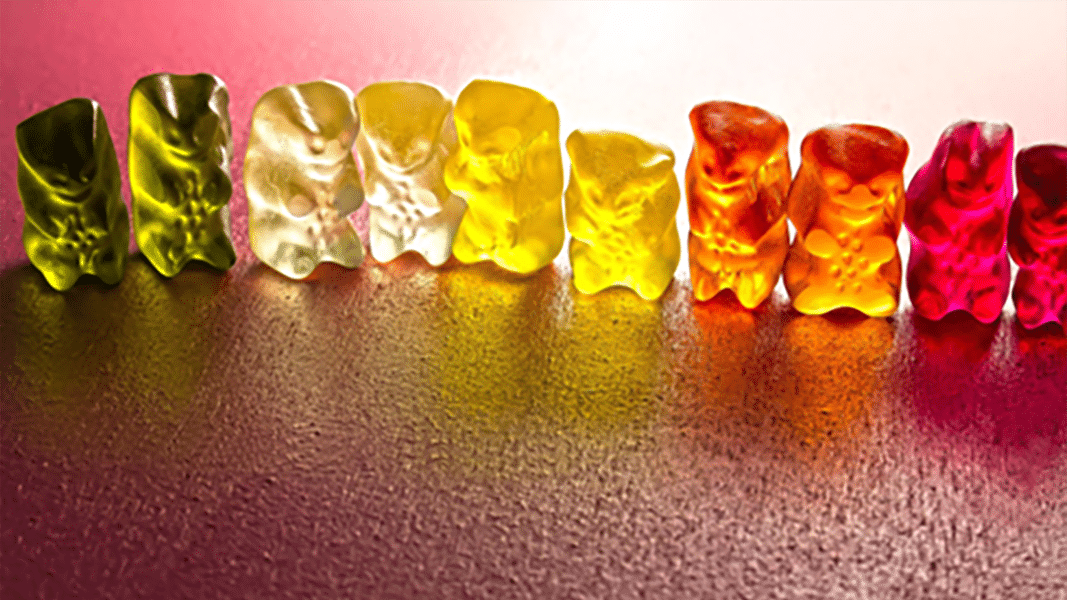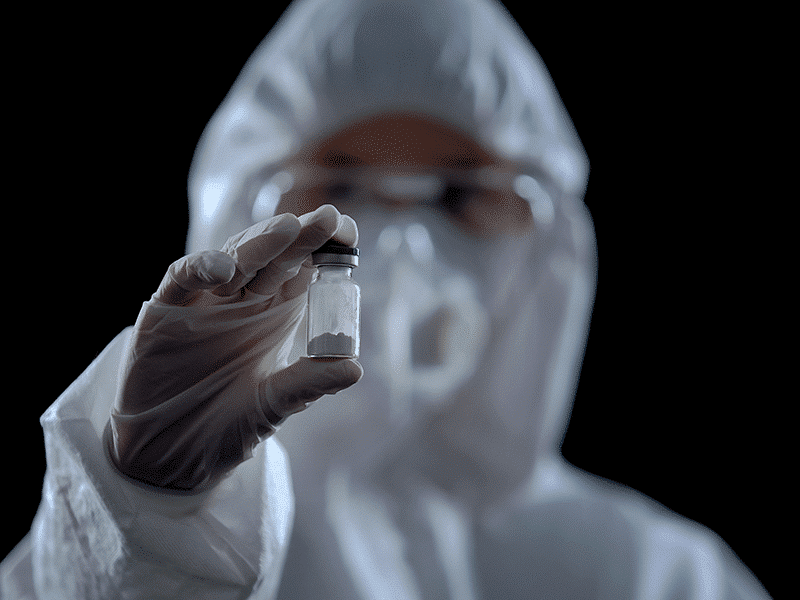“It’s rope, not dope!”
So went the clarion call from early activists seeking to restore the incredibly versatile hemp plant to its rightful place in U.S. industrial production. Just a few decades ago, that catchy slogan accurately summarized the distinction between hemp and cannabis. Up until recently, “hemp” referred to low-resin, non-intoxicating Cannabis Sativa L that had been bred for maximum fiber or seed oil content and grown for multiple industrial purposes, while “cannabis” typically meant plants bred and grown for maximum resin content imbued with medicinal and recreational qualities well-suited for human consumption.
Today, though, the distinction between hemp and high-resin cannabis (aka “marijuana”) is muddled. A plethora of so-called hemp products are now being explicitly marketed for their intoxicating effect. In short, modern-day “hemp” looks a lot more like dope than rope, and that’s confusing to consumers and regulators.
It’s crucial to separate fact from fiction as stakeholders grapple with tricky issues regarding THC potency, CBD efficacy, and product safety. Here are seven common industry-promoted fallacies about hemp.
Fallacy #1: “0.3 percent THC is non-intoxicating.”
Contrary to popular belief, the 0.3 percent THC threshold in botanical hemp does not equate to non-intoxicating levels when applied to edibles and beverages. THC is a potent psychoactive compound. A dose is typically measured in milligrams (thousandths of a gram), not grams. A 0.3 percent threshold can result in an astonishingly high amount of THC in a finished product. In a 12-ounce beverage, for example, 0.3 percent translates into over 1,000mg of THC.1 A single, normal-sized “hemp” gummy could have 20mg of THC. For comparison, the maximum THC per serving allowed in edibles in the regulated California cannabis market is 10mg.
Fallacy #2: “Five milligrams of THC per serving is non-intoxicating.”
In 2023, the U.S. Hemp Roundtable published a white paper2 recommending permissive levels of THC in hemp products, asserting falsely that 5 mg per serving is “below the impairment threshold.” THC sensitivity varies among individuals due to genetics, metabolism, tolerance levels, and other factors. When ingested and processed through the gastrointestinal tract and liver, delta-9-THC converts into the more potent metabolite 11-Hydroxy-THC, which can cause a more intense high and adverse effects.3 A 5mg THC gummy will induce intoxication in many if not most individuals. Some people experience discomfiting psychoactivity from as little as a couple of milligrams of THC.
Fallacy #3: “Delta-8 THC is less potent and thus less risky than delta-9 THC.”
The delta-8 molecule, a naturally occurring isomer of delta-9 THC, has less binding affinity for the CB1 cannabinoid receptor in the brain than delta-9 THC. Activating this receptor is what causes the high that cannabis is famous for. This means that delta-9 THC has a somewhat stronger effect compared to an equal dose of delta-8 THC. So, a consumer would have to imbibe a bit more delta-8 to experience a delta-9 type buzz. But whopping doses of delta-8 and other THC variants are ubiquitous in unregulated hemp products, thereby making a mockery of the PR pitch that delta-8 delivers a milder high.
Fallacy #4: “THC per serving matters; THC per package doesn’t.”
Did you know that a “serving” of potato chips is about ten chips, according to fast food companies, and a “serving” of ice cream is about half of a cup? You, me, and most folks might have a different take on what constitutes a serving of chips, ice cream, or THC for that matter. The point is that product-makers and consumers don’t define serving sizes the same way. The total amount of THC in the package is just as relevant—if not more so—than the amount of THC in a single serving because it’s easy to eat 5, 10, or even a whole bag of THC-infused “hemp” gummies. Some consumers with the munchies will ingest multiple servings at a time, resulting in extreme intoxication from supposedly “low-dose” hemp edibles and beverages.
Fallacy #5: “CBD neutralizes the intoxicating effect of THC, allowing for higher THC limits in combined products.”
A clinical study in Neuropsychopharmacology (Nov 2022) sought to determine if increasing the CBD content in a product would reduce the impairing effects of THC. Four different doses of CBD (0mg, 10mg, 20g and 30mg) combined with 10mg THC were administered to 46 subjects via vaping devices. The researchers found that the intoxicating effects of THC “were not significantly modulated by any dose of CBD,” adding: “At CBD:THC ratios most common in medicinal and recreational cannabis products, we found no evidence that CBD protects against the acute adverse effects of cannabis.”4,5 Other studies suggest that low doses of CBD can actually amplify THC’s intoxicating effects and extend the duration of the cannabis high.6 CBD is no more of an “antidote” to THC than caffeine is to alcohol.
Fallacy #6: “Synthetic cannabinoid molecules are identical to—and therefore just as safe as—plant-derived cannabinoids.”
So-called hemp products with synthetically created cannabinoids—whether molecularly identical to naturally occurring plant compounds or novel designer drugs—are rife with toxic solvent residues and other chemical impurities.7,8 The synthesis of delta-8 THC (& delta-9 THC) from CBD isolate also produces numerous “abnormal THC isomers” with “unknown pharmacological and safety profiles,” according to Dr. Mark Scialdone, a recognized expert in the field of organic chemistry.9 Some synthetic cannabinoids are designed to be far more potent and mind-altering than anything found in nature, as is the case with THC-B, a synthetic THC-like compound with a cannabinoid receptor binding affinity that’s 30 to 40 times greater than traditional THC. A July 2022 study by Portland State University scientists documented that THC-O-acetate yields harmful ketene gas when heated in a commercial vape device. Ketene gas is potentially lethal at five parts per million.10 Its production in vape devices is strongly suspected to have been partially responsible for the deaths and permanent lung injuries seen during the height of the EVALI “vaping crisis.”11 Synthetic cannabinoids have been reported to cause various health problems, including “[d]iffuse alveolar hemorrhage, acute respiratory failure, heart attack, stroke, seizures, and kidney damage.”12
Fallacy #7: “Thanks to a loophole in the Farm Bill, THCA-rich flower is legal smokable hemp.”
This semantic ploy is the most outrageous of all the hemp lawyer put-ons: Raw cannabis flower has high concentrations of delta-9 THCA and less than 0.3 percent delta-9 THC, and therefore, according to this dubious logic, raw cannabis qualifies as hemp under the Farm Bill (which doesn’t actually mention THCA). In fact, there’s no meaningful difference between marijuana and THCA flower, which is essentially good old-fashioned stoner weed rebranded as “legal cannabis” in the unregulated mirror world of intoxicating hemp. When THCA flower is baked, smoked or vaporized almost 90 percent of non-psychoactive THCA converts to buzzy THC. In state cannabis markets, THCA is always included in the definition of THC and the calculation of total THC content. The USDA considers cannabis with high levels of THCA to be marijuana, which is forbidden to grow under state hemp programs.13 So how is it possible that cannabis flower with high THCA content is federally legal hemp? It’s not.
Tiffany Devitt heads up regulatory affairs for CannaCraft and March and Ash. © Copyright, Project CBD. May not be reprinted without permission.
Footnotes
- Assumes a typical gummy weighs about 5.8 grams, and a 12-ounce beverage weighs about 340 grams.
- https://hempsupporter.com/wp-content/uploads/2023/08/USHR-Response-to-Congressional-RFI.pdf
- Huestis, M.A. (2005). Pharmacokinetics and Metabolism of the Plant Cannabinoids, Δ 9-Tetrahydrocannibinol, Cannabidiol and Cannabinol. In: Pertwee, R.G. (eds) Cannabinoids. Handbook of Experimental Pharmacology, vol 168. Springer, Berlin, Heidelberg. https://doi.org/10.1007/3-540-26573-2_23
- Englund, A., Oliver, D., Chesney, E. et al. Does cannabidiol make cannabis safer? A randomised, double-blind, cross-over trial of cannabis with four different CBD:THC ratios. Neuropsychopharmacol. 48, 869–876 (2023). https://doi.org/10.1038/s41386-022-01478-z
- Englund, A., Oliver, D., Chesney, E. et al. Does cannabidiol make cannabis safer? A randomised, double-blind, cross-over trial of cannabis with four different CBD:THC ratios. Neuropsychopharmacol. 48, 869–876 (2023). https://doi.org/10.1038/s41386-022-01478-z
- Solowij N, Broyd S, Greenwood LM, van Hell H, Martelozzo D, Rueb K, Todd J, Liu Z, Galettis P, Martin J, Murray R, Jones A, Michie PT, Croft R. A randomised controlled trial of vaporised Δ9-tetrahydrocannabinol and cannabidiol alone and in combination in frequent and infrequent cannabis users: acute intoxication effects. Eur Arch Psychiatry Clin Neurosci. 2019. This study also found that 400 mg CBD (which is much more than the typical commercial dose of CBD) reduced the intoxicating effects of 8 mg THC. Medical patients beware: such a high dose of CBD runs the risk of interactions with most prescription and over-the counter pharmaceuticals.
- Wakshlag JJ, Cital S, Eaton SJ, Prussin R, Hudalla C. Cannabinoid, Terpene, and Heavy Metal Analysis of 29 Over-the-Counter Commercial Veterinary Hemp Supplements. Vet Med (Auckl). 2020 Apr 15;11:45-55. doi: 10.2147/VMRR.S248712. PMID: 32346530; PMCID: PMC7169471.
- Ray CL, Bylo MP, Pescaglia J, Gawenis JA, Greenlief CM. Delta-8 Tetrahydrocannabinol Product Impurities. Molecules. 2022 Oct 15;27(20):6924. doi: 10.3390/molecules27206924. PMID: 36296514; PMCID: PMC9608670.
- https://projectcbd.org/hemp/expert-gives-delta-8-thc-a-thumbs-down/
- Kaelas R. Munger, Robert P. Jensen, and Robert M. Strong, Vaping Cannabinoid Acetates Leads to Ketene Formation, in Chemical Research in Toxicology 2022 35 (7), 1202-1205DOI: 10.1021/acs.chemrestox.2c00170
- Kaelas R. Munger, Robert P. Jensen, and Robert M. Strong, Vaping Cannabinoid Acetates Leads to Ketene Formation, in Chemical Research in Toxicology 2022 35 (7), 1202-1205DOI: 10.1021/acs.chemrestox.2c00170
- https://projectcbd.org/safety/under-the-radar-synthetic-cannabinoids-evali/
- https://www.federalregister.gov/documents/2021/01/19/2021-00967/establishment-of-a-domestic-hemp-production-program
Recommended Readings
Memo to Congress: Fix the Farm Bill
Ideas for fixing the Farm Bill and advancing a robust CBD market that prioritizes public safety.
Expert Gives Delta-8 THC Thumbs Down
Organic Chemist Mark A. Scialdone, PhD, warns about unregulated synthetic intoxicants being sold under the guise of “hemp.”
Delta-8, Delta-10, HHC, THCO… A Pandora’s Box of Unregulated Cannabinoids
Cannabis industry trade group declares nationwide sale of hemp-derived intoxicants a “public health disaster.”
Special Report on Cannabinoids & Chirality
The promise and pitfalls of synthetically produced CBD.





